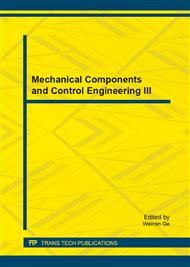p.48
p.52
p.56
p.60
p.64
p.70
p.74
p.79
p.83
Structural Phase Stability and Electronic Properties of Magnesium under High Pressure from First-Principles Calculations
Abstract:
First-principles pseudopotential calculations have been performed to investigate the structural stability and electronic properties of magnesium considering three possible structures under high pressure. The results show that magnesium crystallizes in the hcp structure is to be the most stable structure at the ground state, because of the lowest total energy. Magnesium undergoes a pressure-induced phase transition from the hcp structure to bcc structure at 65 GPa. And no further transition is found up to 220 GPa. The electronic structure properties of three structures of magnesium are also calculated and discussed. The structural stability mechanism is also explained through the electronic structures of three phases.
Info:
Periodical:
Pages:
64-69
Citation:
Online since:
October 2014
Authors:
Price:
Сopyright:
© 2014 Trans Tech Publications Ltd. All Rights Reserved
Share:
Citation:


